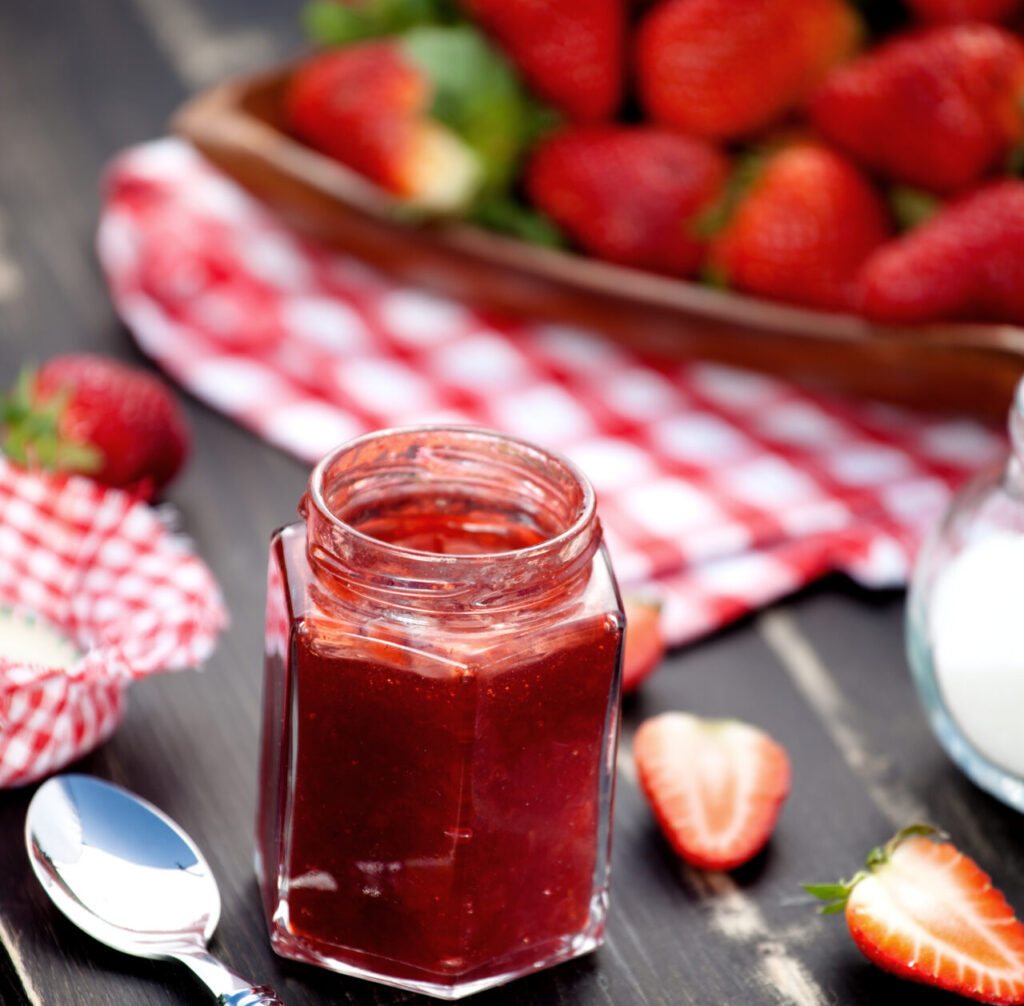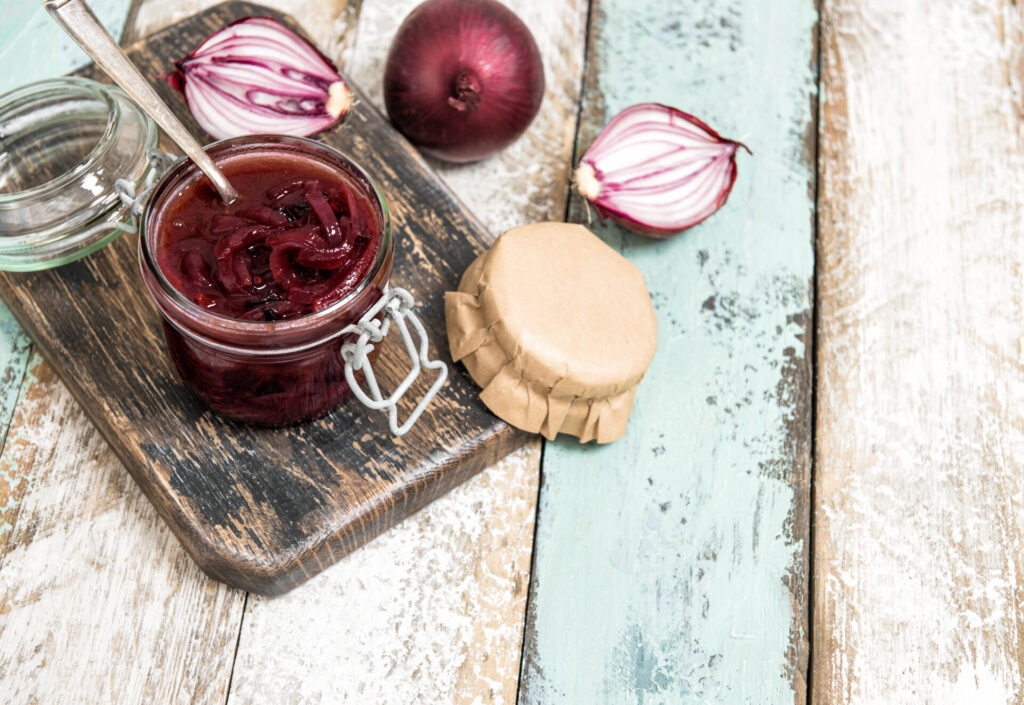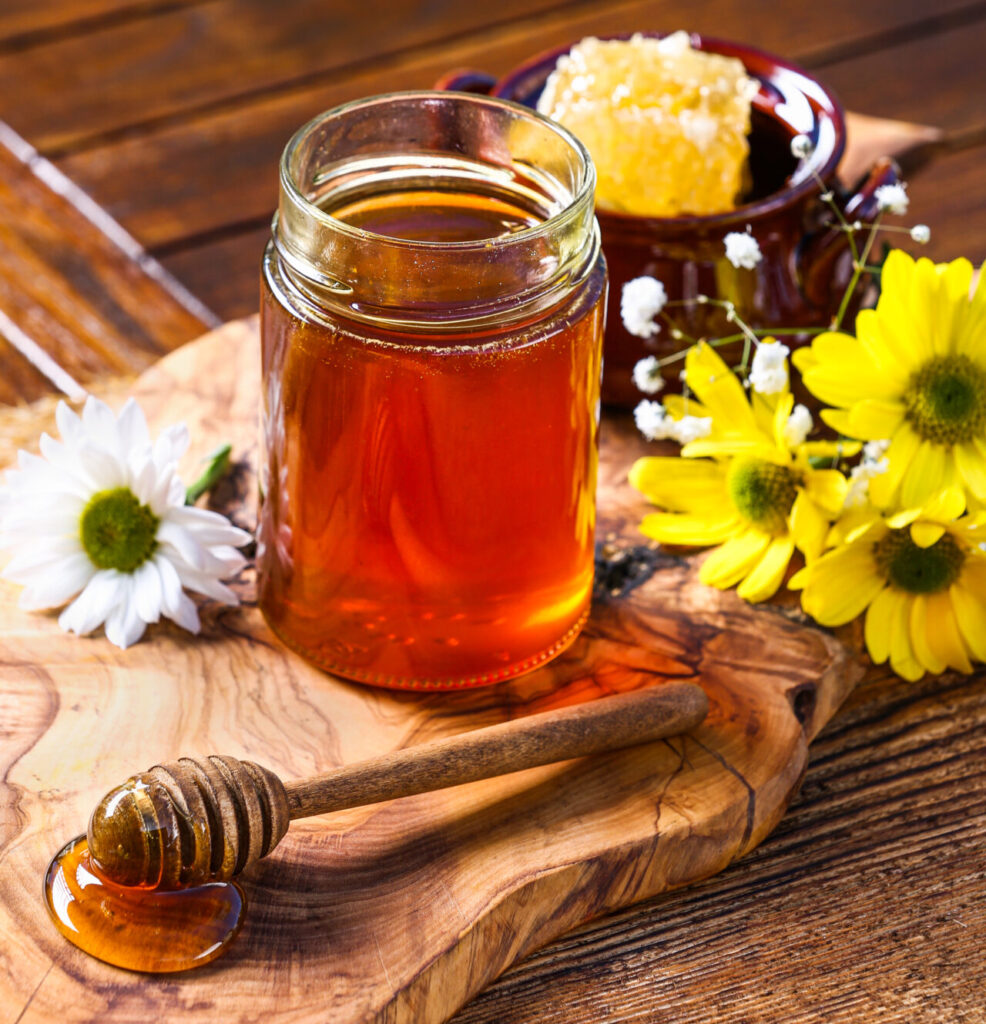Honeys and jams through the centuries
In Alsace, jams and honeys benefit from a traditional know-how since centuries.
Made from local fruits and nectars, these products are appreciated for their texture and their incomparable tastes
Alsace in jam
Alsace is a region known for its production of high quality fruit jams. They are part of culinary traditions and are made from fresh seasonal fruit, often grown locally.
Among the most famous, we find the plum jam and the mirabelle jam, these delicious varieties of local plums. The region also produces red fruit jams such as cherry, raspberry, strawberry and blackberry. To give a unique touch to each jam, they can
be flavored with spices, such as cinnamon, cardamom or star anise.
Traditionally, jams were prepared at home and are very much linked to the holidays: offered in filled baskets, accompanying gingerbread or bredeles. Alsatian women often had their own jam recipe passed down from generation to generation; today many small producers continue the tradition.
A little history
In the Middle Ages, the Crusaders discovered and imported the jam from Arab countries, and participated in its popularization throughout Europe.
First and for a long time considered as a luxury product reserved for the upper classes, it is with the French Revolution that the laws were modified to allow everyone to have access to fruits and to prepare their own jam at home.
At the end of the 19th century, the manufacture of jam was industrialized to meet the growing demand, especially in France and England.

Controlled designation of origin
The production of Alsatian jams benefits from an appellation of controlled origin (AOC) since 2015, in order to protect and enhance this local craft product, and to distinguish its producers on the market. To obtain the AOC, the jams must be produced from fresh local fruits and sa-
sound, without any added preservatives or artificial flavors.
The fruit should be cut into small pieces and cooked with sugar, without any other added ingredients. The proportion of fruit must be at least 55% and the sugar content must not exceed 55%. These jams are produced in small quantities,
which preserves the natural flavors and aromas of the fruit.

The vegetable jams
Alsace also produces vegetable jams, like the red onion jam that often accompanies foie gras.
Pumpkin jam is also popular in the region, especially pumpkin jam which goes well with cottage cheese, for example. Some typical ingredients, such as Riesling, Vosges honey, cinnamon or cumin, add a unique touch to these jams.
Vegetable jams are a great option for those looking to increase the originality of their dishes.

Honey with all the sauces
Honey is an emblematic product of Alsace, valued for its quality, its authenticity and its culinary and medicinal properties which make it an exceptional product.
A key ingredient in Alsatian gingerbread, honey is often used in the preparation of savory dishes, especially to accompany cheese, meat or vegetables. Some producers even offer honeys flavored with black garlic or wild garlic, thyme, rosemary or cumin, which bring an original and tasty touch to dishes.

Honey from Vosges
Vosges honey is a beekeeping specialty of the region, known for its richness in melliferous plants that allow bees to produce a quality honey. They drink nectar from a variety of plants, including mountain flowers such as heather, soapwort, red clover, dandelion and raspberry.
Honey from the Vosges is often described as sweet and fragrant, with a flavor
delicate and subtle that varies according to the plants from which it is derived.

Apiaries in the city
Many cities in France have set up programs to encourage the installation of beehives in urban areas, in order to promote pollination and biodiversity in cities.
Hives can be installed in gardens, parks or even on the roofs of buildings.
In Strasbourg, Colmar and Mulhouse, several programs and associations defend this idea. However, these installations require a certain amount of supervision and regular monitoring to ensure the safety of the species and the inhabitants.
The last few years have been difficult for honey production in Alsace, but urban hives have sometimes provided better harvests than those in rural areas. Bees in cities survive better because of the variety of food available
year-round, including flowers installed by the city. The temperature is on average 3°C higher than in the countryside, which also favors honey production. However, the health of bee colonies depends on many factors, such as the quality of the air, water and urban environment, as well as responsible management of the hives.


